A day in the life of a SMART teacher
What is it like working with SMART Boards? Mark Hartwright explains how the technology has transformed his teaching
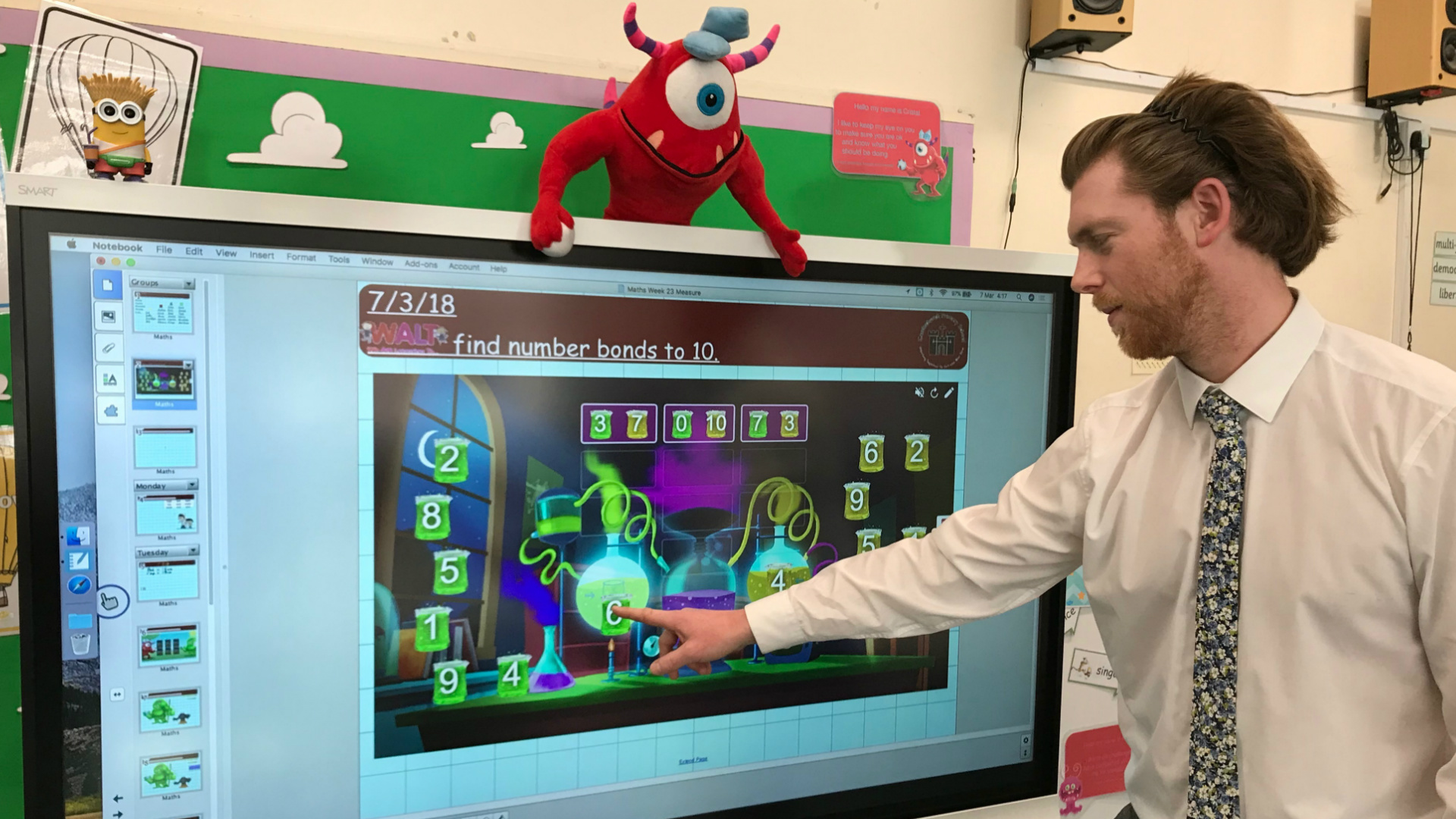
Mark Hartwright teaches at Stafford's Castlechurch Primary School using the SMART Board 6000 from SMART Technologies. With SMART interactive displays, teachers and pupils can use pens and even their fingertips to work on the board simultaneously, creating an extension of the traditional whiteboard with quizzes, game-based activities and tests to help learning. Here, Mark takes us through a typical working day and explains how he uses SMART to inspire his pupils.
by Mark Hartwright
For the first five years of teaching this mainly involved playing films, displaying images and writing on top of the interactive display boards. It wasn't until I joined Pheasey Park Farm school in Walsall that I began to see the full potential of SMART. There they rolled out training and I soon discovered how the technology could significantly benefit both teaching and learning.
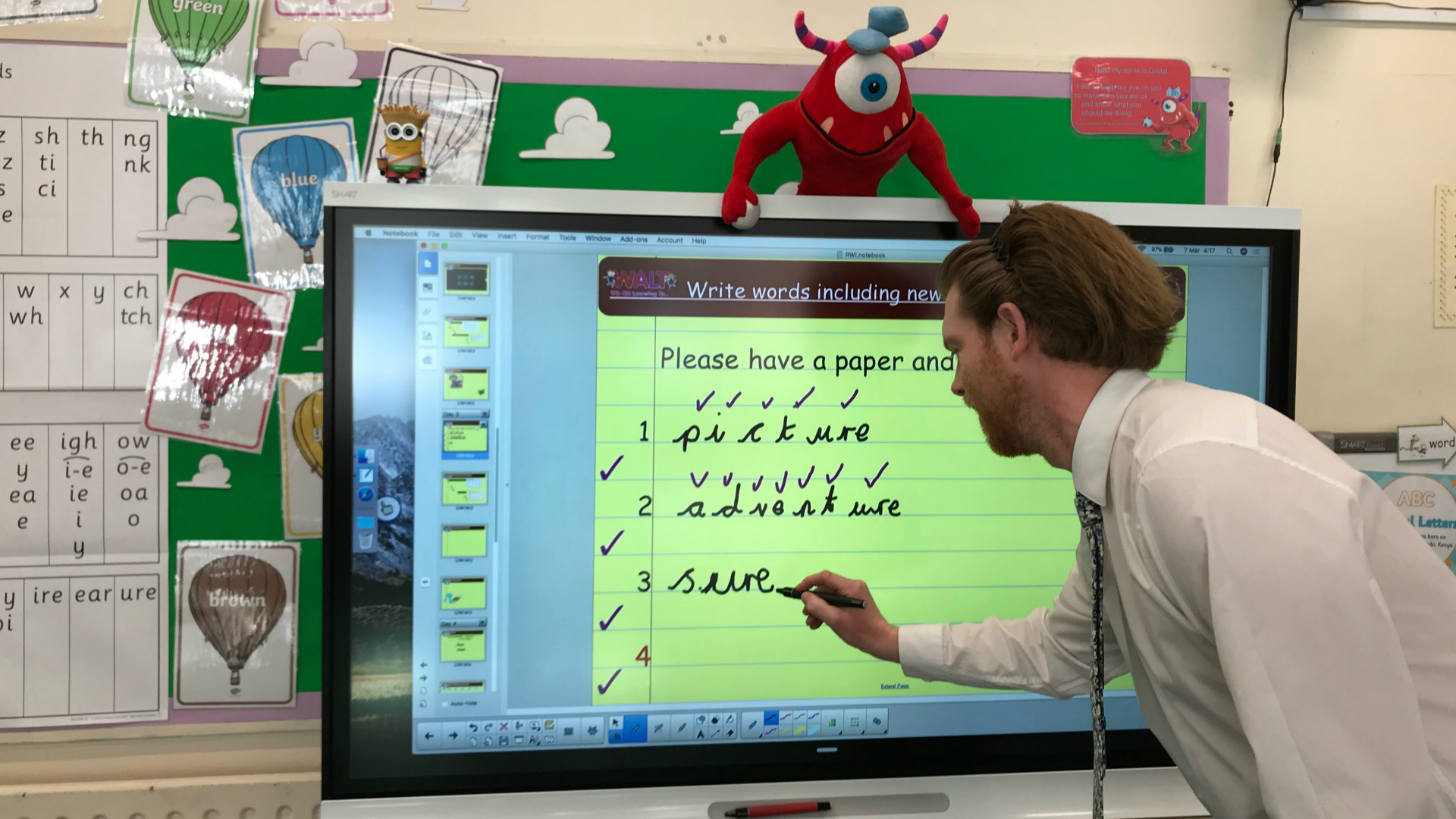
Now I teach 5 and 6 year olds in Year 1 at Castlechurch Primary School in Stafford, and SMART is integral to my working day (my classroom has a SMART 6000 with Notebook 17.1 software). I teach all subjects, so in the morning we focus on Maths and English, then in the afternoon we are topic-based around a theme. When I arrive in the morning I load up the board with an early start' task. Today it was practising spelling, so I set up a picture clue on the board telling the children which books they need to get out. They can get on with this task straight away, which is particularly helpful as I can spend some time talking to parents. I've also used the board to create a visual timetable of all the events happening at school today. We can come back to this throughout the day so the children know what they'll be doing next.
Finding the answers together
I start today's lessons off with Maths and have already devised a lab activity on the SMART Board. I want the entire class to have input so I bring students up in groups to interact with the board. It's them driving the learning rather than me, and it's a case of them discovering the right answer rather than me just telling them. If they end up getting a few answers wrong we can pause the game and look for the solution together. In Year 1 they are still at a very young age and are making the transition from learning through play with a SMART Board I'm helping to bridge that gap by giving them a game that's fun and exciting to do. For English the SMART Board really comes into its own when I'm teaching spelling or handwriting. Before the lesson I use the page recorder, which allows me to capture my own handwriting. In the lesson I just hit play on the screen and the children can see how letters and words are being formed. If a particular child is struggling with their handwriting task they can just walk up to the board and press play themselves.
In the afternoons we have continuous provision, which is more an early years style of teaching with activities set up around the classroom. I'll sit in my focus group where I'll teach approximately six children while the rest of the class will do activities based on a particular theme. Today we're continuing our look at the Owl Babies story, so running alongside the focus group there's a table with Lego to build woodland creatures, a writing group, a laptop with Notebook files and prompts, and a lab activity running on the SMART Board for children to play. The latter is useful for consolidating learning and giving students the chance to revisit something from earlier in the day. For example, today in Maths we continued to improve our speed when recalling number bonds to 10 - lab activity gives the children another chance to look at it in the afternoon.
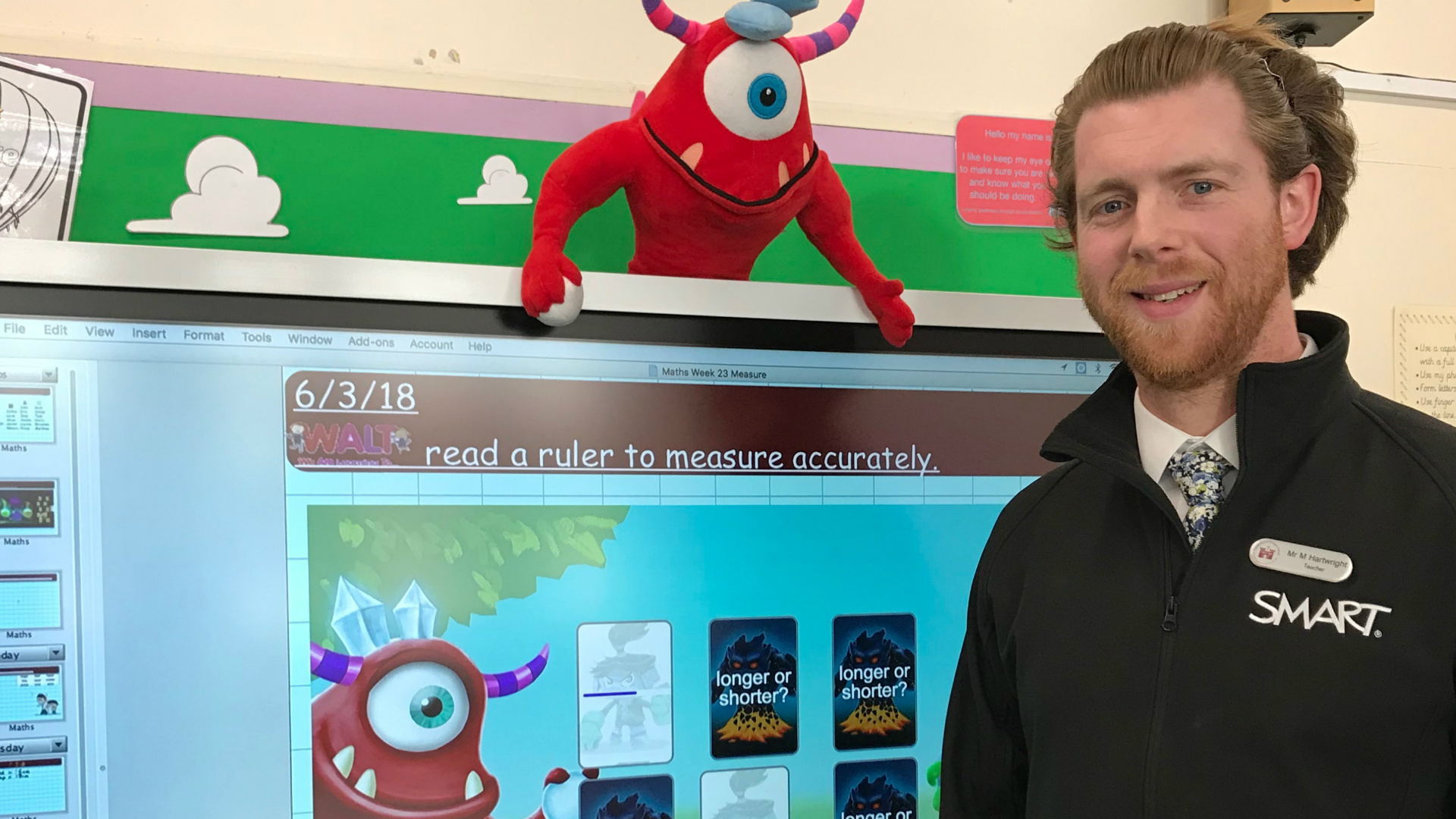
Splitting the children up into smaller groups is a great way for me to get some high-quality teaching in with my focus group. If I'm trying to get an entire class to do a task at the same time it can become complicated. SMART has enabled me to split up the classroom and do some focused teaching for 20 minutes, then let the students do another activity that is more learning through play. The children tend to love technology, and it's a great way into learning. It never feels like a chore to them, particular if it involves something interactive like playing a game. I've got a student at the moment who doesn't speak English, but she's more than happy to come and play. The games are straightforward and she can see what to do, so it's a universal way to learn.
The indispensable SMART Notebook
In terms of the SMART tools I use the most, I'd pretty much refuse to teach if I don't have SMART Notebook! I use the input system of the iQ feature to run my laptop screen through the board. I've taught on competitors' boards before and it all comes down to software. I actually downloaded SMART Notebook to use on other boards, primarily because it's so much better than anything else on offer. Although many teachers like to use pens to interact with the board, I prefer interacting through touch it's tactile learning and you immediately feel part of it. I never felt like I had to learn to use the board because it's very intuitive. That's exactly the same for students; it's fluid and they can quickly get on with their learning rather than be bogged down by clunky pieces of tech. It helps to build that relationship you have with the children and if you're using a fun stimulus, like the SMART Board, then you can build that relationship better and have fun. If you're giving them something fun and exciting to do they're going to like what they're doing and in a roundabout way they'll like you as well and that relationship gets better.
One thing I'd say to any schools or teachers looking to adopt SMART: go out and try it. Until you've seen how easy it is to use, you can't see its full potential. If you can see the key features, particularly the lab activity games for primary schools, you'll see how easy it is to make them. SMART has changed my teaching completely. Now it's a lot more organised, a lot more structured, a lot more fun and a lot more interactive. Once you see a child use SMART software and the enjoyment they get out of it, to move, touch, manipulate, and play with their learning, you'll quickly realise that the technology sells itself.
SMART Technologies is transforming education discover more here.
Get the ITPro daily newsletter
Sign up today and you will receive a free copy of our Future Focus 2025 report - the leading guidance on AI, cybersecurity and other IT challenges as per 700+ senior executives
ITPro is a global business technology website providing the latest news, analysis, and business insight for IT decision-makers. Whether it's cyber security, cloud computing, IT infrastructure, or business strategy, we aim to equip leaders with the data they need to make informed IT investments.
For regular updates delivered to your inbox and social feeds, be sure to sign up to our daily newsletter and follow on us LinkedIn and Twitter.
-
 Meta just revived plans to train AI models using European user data
Meta just revived plans to train AI models using European user dataNews Meta has confirmed plans to train AI models using European users’ public content and conversations with its Meta AI chatbot.
By Nicole Kobie
-
 AI is helping bad bots take over the internet
AI is helping bad bots take over the internetNews Automated bot traffic has surpassed human activity for the first time in a decade, according to Imperva
By Bobby Hellard
-
 How AI innovation is driving educational excellence
How AI innovation is driving educational excellenceSupported Content Generative AI is helping students learn and educators teach, and the classroom of today is shaping the future of work
By Bobby Hellard
-
 Fuelling growth through transactions
Fuelling growth through transactionswhitepaper Prepare for the future of payments with flexible solutions
By ITPro
-
 Monetization strategies for digital content creators
Monetization strategies for digital content creatorswhitepaper An overview of the economies of forex markets in Latin America and what payment providers need to know to enter the region
By ITPro
-
 AMD Ryzen™ PRO processors and Windows 11 Pro
AMD Ryzen™ PRO processors and Windows 11 Prowhitepaper Better together for enterprise
By ITPro
-
 Retail forex development in Latin America
Retail forex development in Latin Americawhitepaper An overview of the economies of forex markets in Latin America and what payment providers need to know to enter the region
By ITPro
-
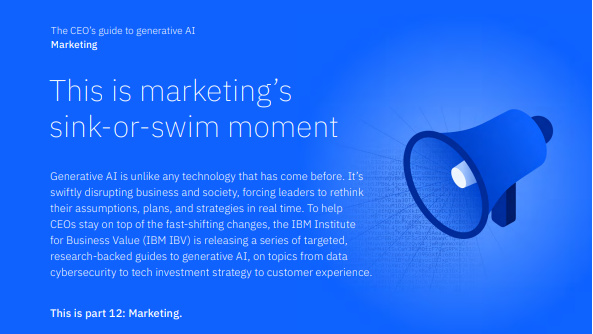 The CEO's guide to generative AI: This is marketing's sink or swim moment
The CEO's guide to generative AI: This is marketing's sink or swim momentWhitepaper Position marketing as the model for generative AI-driven workforce transformation
By ITPro
-
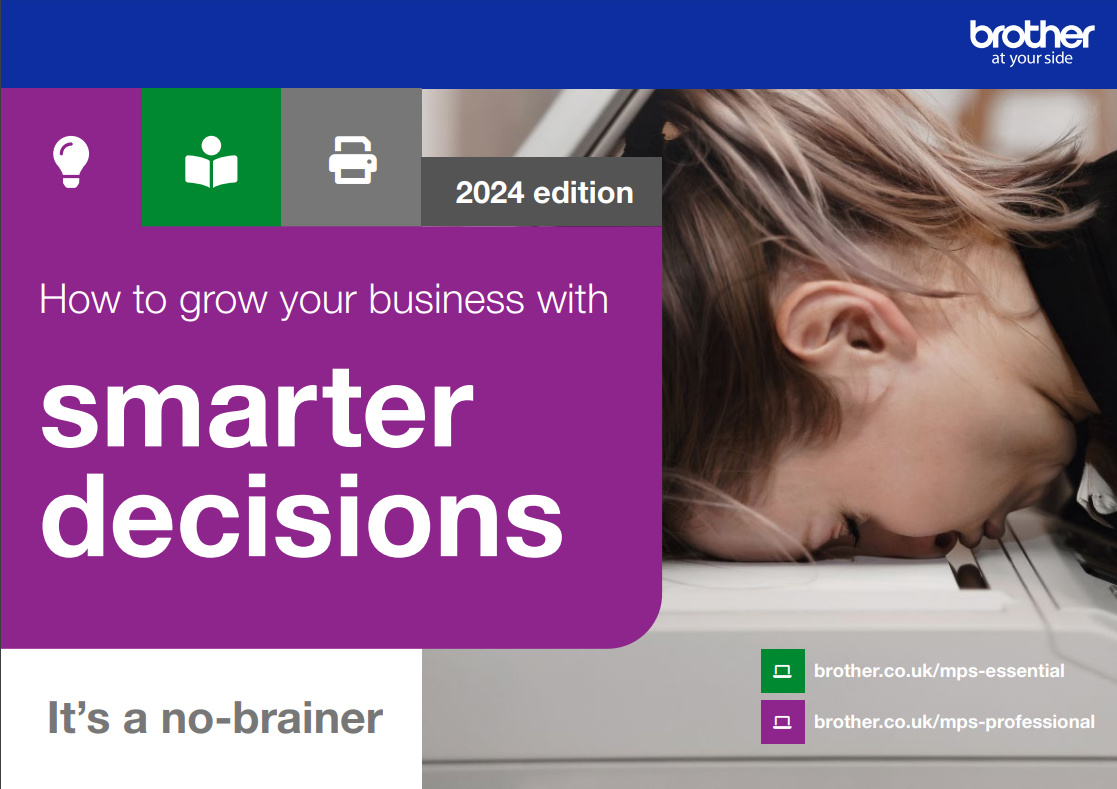 How to grow your business with smarter decisions
How to grow your business with smarter decisionsWhitepaper Introducing changes that generate business growth in the face of economic uncertainty for a stronger, more cohesive future
By ITPro
-
 AI’s quantified impact on the finance function
AI’s quantified impact on the finance functionWhitepaper Improving process quality, cost, and efficiency
By ITPro
